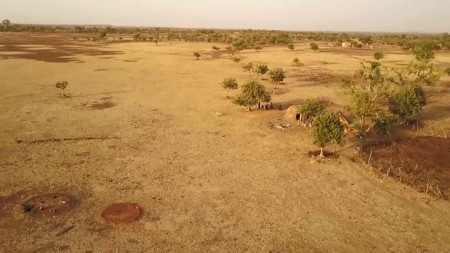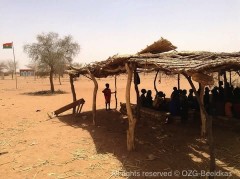Situation
The Sahara
The Sahara is the largest sand desert in the world, about the size of the USA. It hasn't always been this way: long ago, this area consisted mostly of fertile savannah. But since the last ice age, large areas started desertifying due to climate change, until the desert reached the size it has today.

The Sahel
This desertification is not just a process in the past. There are transition zones such as the Sahel at the south side of the Sahara. This is a 5400 km long strip, up to 1000km wide. It still supports some vegetation, but is a very vulnerable region. In the past millennia, it has been hit by multiple mega droughts. For example, there were literally centuries of drought between 1450 and 1700, and more recently also heavy droughts since 1960. These have probably been made worse by the ever increasing climate disruption, caused by our human civilization.
Desertification
Long droughts (periods with barely any rain) are desastrous for people, animal life and vegetation. Animals leave the area, vegetation disappears, the ground hardens due to heat and hard rainfall, and the area becomes a desolate place. Rain can no longer penetrate the hard earth crust, and the land can not repair itself by the time the next period of drought arrives.
 The population
The population
Despite inhospitable circumstances, millions of people live in the Sahel, even in the Sahara. For them, it is a daily struggle to take care of their families. In order to create sustainable, durable change, it is very important to involve this local population. Read more about how we do this.